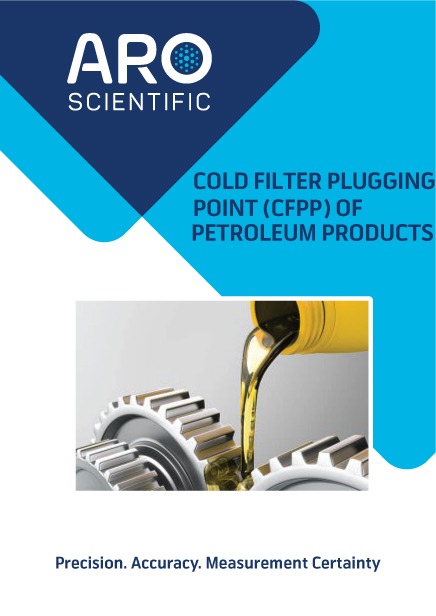Blog
-
May 08, 2025
Introduction: why method validation matters
In today’s highly regulated scientific landscape, method validation is the bedrock of accurate and reproducible analytical results. Whether your laboratory operates in petrochemicals, pharmaceuticals, environmental testing, or food safety, validated methodologies ensure integrity, traceability, and compliance with international standards like ISO/IEC 17025 and regulatory guidelines.
Certified Reference Materials (CRMs) helps you in achieving reliable validation.
-
April 07, 2025
Introduction on how ISO 17034 ensures CRM quality
When it comes to analytical chemistry, precision and accuracy are paramount. Laboratories worldwide rely on Whether in pharmaceuticals, environmental testing, or petroleum analysis, the reliability of measurement results depends heavily on the quality of reference materials and calibration standards used in the laboratory. Certified Reference Materials (CRMs), reference materials and calibration standards to ensure accuracy in their measurements, but not all CRMs are manufactured and certified the same. Accreditation under ISO 17034 plays a critical role in differentiating
-
April 02, 2025
Introduction to selecting the right Certified Reference Material (CRM) for your laboratory
In any analytical laboratory, precision and accuracy are paramount. Whether in pharmaceuticals, environmental testing, or petroleum analysis, the reliability of measurement results depends heavily on the quality of reference materials and calibration standards used in the laboratory. Certified Reference Materials (CRMs), reference materials and calibration standards are critical in ensuring accurate, reliable and traceable measurements, selecting the correct CRM for your laboratory's requires careful consideration.
-
October 29, 2024
What is the Cold Filter Plugging Point (CFPP)?
Cold Filter Plugging Point (CFPP) is a critical parameter that determines the lowest temperature at which a given volume of diesel fuel, biodiesel blends, gas oils and other middle distillates can pass through a standardised filtration device. Understanding Cold Filter Plugging Point is crucial for preventing fuel filter plugging and engine problems in cold weather conditions. This guide will provide a brief overview of Cold Filter Plugging Point, including its significance, test methods, and practical implications for industry professionals.
What is the difference between Cloud Point and Cold Filter Plugging Point?
Cloud Point and Cold Filter Plugging Point (CFPP) are both temperature-related parameters for diesel fuel, biodiesel blends, gas oils and other middle distillates, but they serve different purposes. The Cloud Point refers to the temperature at which solid components begin to form
-
August 20, 2024
Overview of Saybolt Colour in Petroleum Products
Saybolt Colour is a crucial measurement in the petroleum industry, defining the colour of various petroleum products, including refined oils such as undyed motor and aviation gasoline, aviation turbine fuels, naphtha, kerosine, pharmaceutical white oils, diesel fuel oils, heating oils, and lubricating oils and petroleum waxes. This colour parameter is essential for quality control and ensuring product consistency. The Saybolt colour scale varies, the faintest coloration +30, the darkest evaluable Saybolt colour number is -16.
Importance of Saybolt Colour in Petroleum Products
Saybolt Colour holds significant importance in the petroleum industry as it plays a pivotal role in quality assurance and product consistency. The colour of petroleum products can indicate purity, processing quality, contamination and even product performance characteristics. Saybolt Colour allows users
-
April 03, 2024
Introduction
Cloud point is an important property of petroleum products that can greatly impact their performance and reliability. Understanding cloud point is crucial for industries that rely on petroleum products and biodiesel fuels. This brief guide provides an explanation of cloud point, its significance, and how it can be measured accurately using certified reference materials. Whether you are a researcher, technician, or industry professional, This guide aims to provide an overview of the cloud point, including its definition, measurement techniques, factors affecting it, and the importance of using certified reference materials for accurate analysis.
What is Cloud Point or fuel Cloud Point and why is it important in the petroleum industry?
Cloud point refers to the temperature at which paraffin wax or other solid components start to precipitate from a petroleum product, causing it to become cloudy or hazy. This phenomenon can occur in various petroleum
-
January 23, 2024
Pour Point of Petroleum Products – A Brief Guide.
Introduction
The pour point of petroleum products is a critical property that directly impacts their performance and usability in various industries. Whether it's automotive fuels, lubricants, or other petroleum-based products, understanding the pour point is essential for industry professionals to ensure proper handling and storage. This guide aims to provide an overview of the pour point, including its definition, measurement techniques, factors affecting it, and the importance of using certified reference materials for accurate analysis.
What is the pour point test for petroleum products?
The pour point test for petroleum products is a test used to determine the lowest temperature at which a sample of the product will flow under specified conditions. The pour point is a crucial property for various applications, especially in cold climates or during transportation and storage, where low temperatures
-
October 31, 2023
Introduction
Flash point analysis is a crucial process in various industries, including oil and gas, chemicals, and transportation. It is a method used to determine the lowest temperature at which a substance can produce enough vapour to ignite in the presence of an ignition source. Understanding flash point is essential for ensuring safety in handling and storage of flammable substances. This guide will provide you with everything you need to know about flash point analysis, including its importance, testing methods, standards, and the use of flash point certified reference materials. Whether you are a scientist, engineer, or safety professional, this guide will equip you with the knowledge and tools to effectively perform flash point analysis and mitigate potential hazards.
What is flash point analysis?
-
October 24, 2023
Introduction to ISO 17034
ISO 17034 is an international standard that sets out the requirements for reference material producers and helps ensure the reliability and accuracy of measurement results and reference materials produced. Reference materials play a critical role in quality control and assurance across a wide range of industries, including petrochemicals, pharmaceuticals, food and beverages, environmental testing, and more. By adhering to ISO 17034, reference material producers can demonstrate their competence and expertise in producing reliable and traceable materials. In this blog, we will explore the key aspects of ISO 17034 and how it can benefit both reference material producers and end-users.
Understanding the Importance of International Standards
International standards play a crucial role in today's globalised world. They provide a common set of guidelines and requirements that facilitate trade, ensure product
-
October 17, 2023
Introduction
In the field of analytical chemistry, accuracy is paramount. When analysing samples to determine the Total Base Number (TBN), it is crucial to have reliable reference materials to ensure accurate results. Certified Reference Materials (CRMs) play a vital role in maintaining precision and accuracy in TBN analysis, as they provide a benchmark against which samples can be compared. This blog explores the importance of total base number in various industries, as well as the utilization of certified reference materials to maximize accuracy and enhance confidence in analytical results.
Understanding the Total Base Number (TBN)
Total Base Number (TBN) is used in the field of analytical chemistry, and it is the measure of the reserve alkalinity in a sample. This parameter is particularly important in industries such as petroleum, automotive, and marine, where TBN analysis is crucial for monitoring the performance and quality




